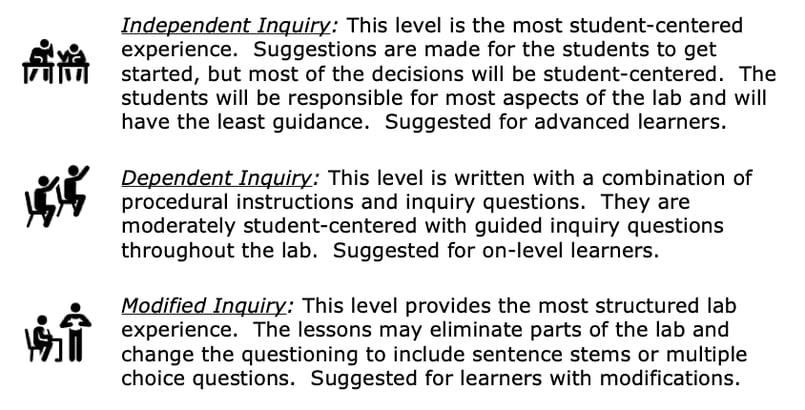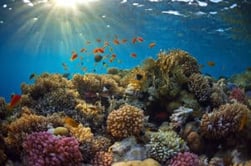Population Resources Inquiry Lab
Middle School Inquiry Lab on Population Resources
In this lab students will analyze data from an Arctic ecosystem in the form of a graph. Students will play a game to emphasize the relationship between resources.
Each inquiry lab will contain an essential question that will drive the lesson and make students think. For this lesson, the essential question is:
- How does the availability of resources affect the populations in an Arctic ecosystem?
BACKGROUND INFORMATION AND MATERIALS LIST:
Students will begin the lab by reading the essential question and background information. This can be done individually, as lab groups, or as a whole class. If you consider lab groups, you also might include some type of whole class formative checks before digging into the lab.

Materials List:
- COLLAPSE! ecosystem cards
- COLLAPSE! tally page (one per player)
- dice
PROCEDURE:
For this lab, students will complete two sections in order to better understand this concept. The first part of the lab has students analyze a graph on lemming population vs. Arctic fox litter size. Students will have to analyze trends and explain what they think caused these trends.
Once completed with the first section, students will move on to a game. The goal of the game is to be the first to create a stable ecosystem. Students start off with 20 producers and five consumers. During their turn, each student will draw a card, which will indicate what they are rolling for. The number on the die indicates how many more of the card they drew are added to their ecosystem. Watch out, some cards double the number students rolled. Students know they won if the ratio of producers to consumers are 2:1.
CHECK FOR UNDERSTANDING:
At this point in the lab, students will be checked for understanding by answering questions about their findings. Here are a few that come with the lab:
- Lemmings are consumers (plant eaters). Explain how the availability of plants for food could cause this population's pattern:
- How would an increase in food for lemmings also affect the fox population?
CONCLUSION
Students will go back to the essential question and write a CER (Claim, Evidence, Reasoning) to conclude the lab. Once completed, students will reflect back on their learning by answering the following questions:
- How would you expect this to affect the fox population? Why?
- Due to the facts above, how do lemming populations affect geese populations in this area?
MODIFIED AND INDEPENDENT INQUIRY VERSIONS
All of the Kesler Science inquiry labs come with three different modification levels. Each lab is differentiated using the icons below.
STANDARDS ALIGNMENT
NGSS: MS LS2-1 – Analyze and interpret data to provide evidence for the effects of resource availability on organisms and populations of organisms in an ecosystem.

Download Over $100 in FREE Resources
For Middle School Science
Simply create a login below and gain immediate access to a selection of our Kesler Science product line worth $100 - for FREE. There's a full version of every product type! You'll also join tens of thousands of middle school science teachers who receive timely tips and strategies straight to their inbox.





